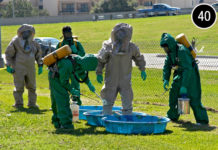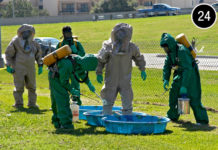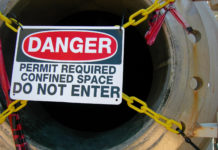Summer outdoor workers are exposed to dangerous weather hazards – extreme heat and sun exposure. Extreme heat can cause heat stroke, heat cramps, heat exhaustion, heat rash, and other problems. Sun UV ray exposure can increase a worker’s risk for developing sunburn and types of skin cancer.
Understanding the risks, prevention, and signs and symptoms can help workers stay safe while working in hot outdoor environments.
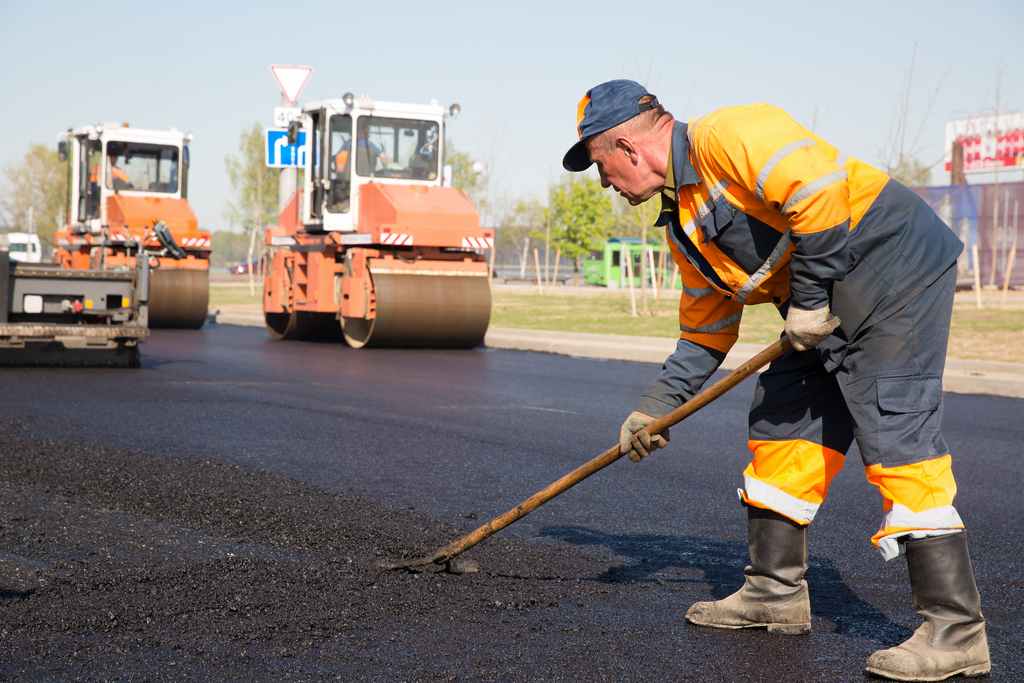
Sun UV Ray Exposure
UV rays are a part of sunlight that is an invisible form of radiation. The UVA ray type is believed to damage connective tissue and increase the risk for developing skin cancer.
Sunlight exposure is highest during the summer and between 10:00 a.m. and 4:00 p.m. Working outdoors during these times increases the chances of getting sunburned and long-term exposure can lead to some types of skin cancer.
- Training provides an overview of OSHA, workplace hazards, workers' rights, employer responsibilities, and how to file a complaint. Required by some states and companies in order to start employment on a worksite.
- 10hr only $89 - 30hr only $169!
- Enter Promo Code "osha15offF" at Checkout
Recommendations for Employers
Employers should take the following steps to protect workers from sun exposure:
- When possible, avoid scheduling outdoor work when sunlight exposure is the greatest
- Provide shaded or indoor break areas
- Provide training to workers about sun exposure (risk, prevention, signs and symptoms)

Recommendations for Workers
Workers should follow these recommendations to protect themselves from UV damage from sun exposure:
- Wear sunscreen with a minimum of SPF 15.
- Old sunscreens should be thrown away because they lose their potency after 1-2 years.
- Sunscreens should be liberally applied (a minimum of 1 ounce) at least 20 minutes before sun exposure.
- Sunscreens should be reapplied at least every 2 hours and each time a person gets out of the water or perspires heavily.
- Follow the application directions on the sunscreen bottle.
- Workers should also wear wide-brimmed hats and sunglasses with almost 100% UV protection and with side panels to prevent excessive sun exposure to the eyes.
- CDC – Protect Your Employees from Skin Cancer
Heat Stress Overview
Understanding heat stress can help you to stay safe while working in hot environments. Things you need to know:
- Heat exposure can cause a range of effects on your body, from irritating rashes to heat stroke, which is often fatal.
- Heat exposure can cause confusion and poor judgment—use the buddy system to monitor coworkers for heat illness.
- Drinking enough water is critical to preventing heat illness. Stay hydrated.
- Cooling is the treatment for all heat illness.
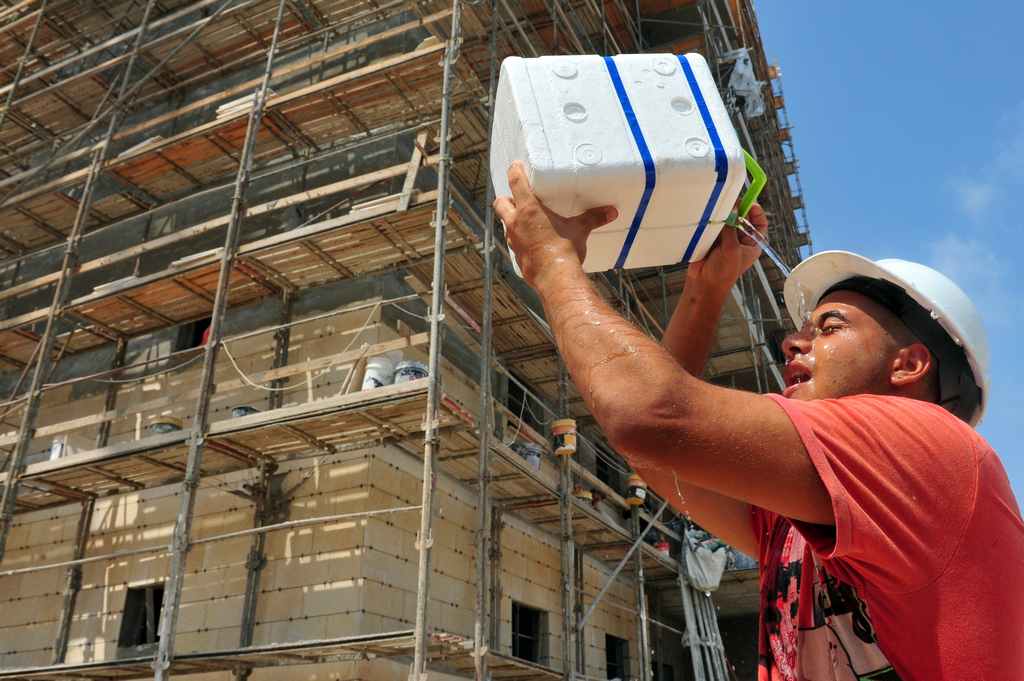
Factors that Increase Heat Illness Risk
- High humidity
- Lack of wind or breeze to cool the body
- Dehydration
- Lack of acclimatization
- Age over 60 years
- Protective gear, including non-breathable or minimally breathable clothing, respirators, and chemical-resistant apparel
- History of heat illness
- History of recent illness unrelated to heat (especially involving vomiting or diarrhea)
- Certain health conditions
- Certain medications
- Physically demanding work
- Recent alcohol use (within previous 24 hours)
Heat Stress Safety
Stay hydrated!
- Drinking enough fluids is one of the most important ways to avoid heat illness.
- Don’t rely on thirst to tell you when you are dehydrated—thirst lags behind dehydration by several hours.
- Drink 1 cup (8 ounces) of water every 15–20 minutes while working in the heat.
- Electrolytes can be replaced by eating regular meals.
- Sports drinks can also replace electrolytes, but are not usually necessary unless heavy sweating continues for more than 2 hours
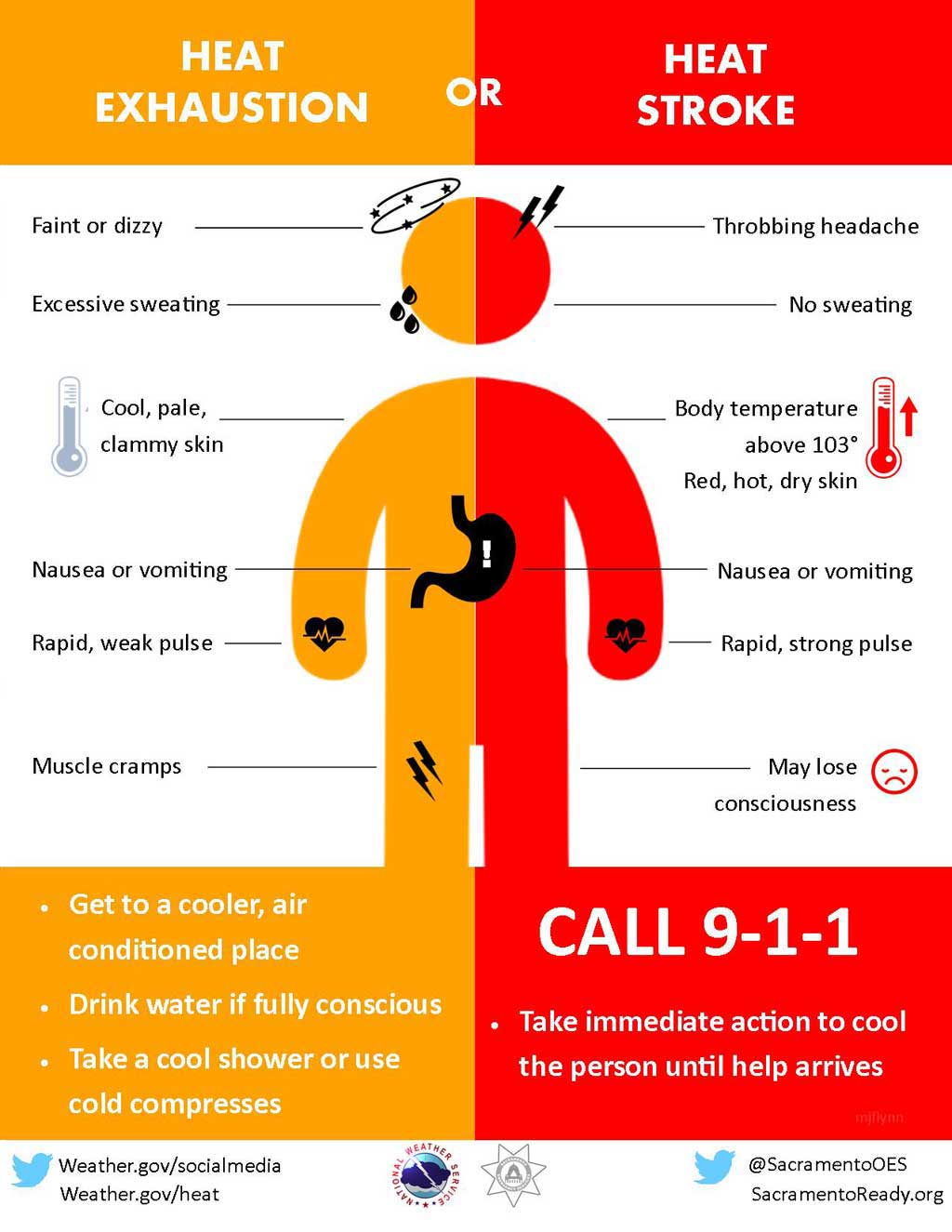
- Heat acclimatization is the improvement in heat tolerance that comes from gradually increasing the duration or intensity of work performed in a hot setting.
- Acclimatization is most effective if it takes place gradually over a period of 7 to 14 days.
- You begin to lose your acclimatization after about one week away from work in the heat.
- After 1 month away from work in the heat, most people will have lost nearly all heat acclimatization.







